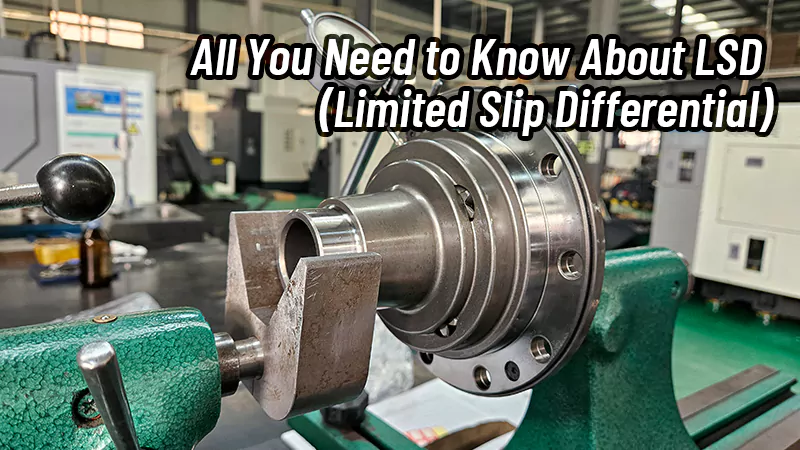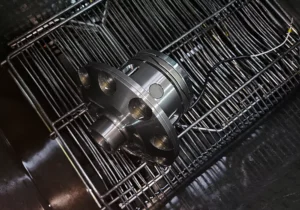From everyday driving on wet roads to spirited cornering on winding mountain passes or performance racing, LSDs have become essential for enhancing both control and safety. Understanding how they work, their types, and their impact on driving behavior is crucial for enthusiasts and engineers alike.
To grasp the concept of an LSD, it helps to first understand a traditional open differential. An open differential allows the left and right wheels on an axle to rotate at different speeds, which is necessary when a vehicle turns. However, this design has a major drawback: if one wheel loses traction, such as on ice, mud, or gravel, the differential sends most of the engine’s torque to the slipping wheel. As a result, the car may struggle to move despite the other wheel having full grip.
Limited slip differentials are classified based on the mechanisms they use to transfer torque, and each type has distinct characteristics that influence vehicle behavior.
Clutch-Type LSD relies on friction plates stacked inside the differential. As one wheel starts to slip, the friction plates engage progressively, sending torque to the wheel with more grip. This design offers predictable handling and strong cornering performance, making it a favorite in motorsports. However, because the system relies on friction, the plates wear over time, requiring periodic maintenance or replacement.
Torsen (Torque-Sensing) LSD uses helical or worm gears instead of friction plates. Torque transfer is automatic and proportional: when one wheel slips, the gears mechanically bias torque toward the wheel with traction. Torsen LSDs are known for their smooth, continuous engagement and low maintenance requirements, making them ideal for road-going performance vehicles as well as high-end sports cars.
Cone-Type LSDs are similar to clutch-type units but use cone-shaped friction surfaces. This configuration allows progressive torque transfer in a compact design, which is advantageous for smaller vehicles or tightly packaged all-wheel-drive systems. Cone LSDs provide smooth engagement, reducing sudden torque spikes that can unsettle the car during cornering.
The distinction between an LSD and an open differential is fundamental to understanding why LSDs matter. In an open differential, torque distribution is passive and equal, which can lead to wheel spin when traction is uneven. In contrast, an LSD actively biases torque toward the wheel with grip, resulting in better traction and stability.
This difference is particularly noticeable during acceleration from a standstill, cornering at high speeds, or driving on low-traction surfaces. A car equipped with an LSD can maintain momentum and control, whereas an open differential-equipped car may struggle as one wheel loses traction. Additionally, LSDs influence vehicle dynamics. Depending on the design, they can reduce understeer or oversteer tendencies, allowing more balanced handling and predictable behavior.
The advantages of LSDs are evident in a variety of driving scenarios. During acceleration, the LSD prevents one wheel from spinning freely, ensuring more effective use of engine power. When taking corners, it limits inside-wheel slip, providing smoother power delivery and increased stability. On wet, icy, or uneven surfaces, the LSD enhances grip, reducing the risk of skidding and improving driver confidence.
Even everyday drivers benefit from LSD technology. Vehicles equipped with LSDs feel more stable during sudden acceleration or on slippery roads. Sports car enthusiasts appreciate the predictable handling and increased control during high-speed cornering, while off-road drivers rely on LSDs to maintain traction on uneven terrain. Essentially, an LSD enhances the vehicle’s ability to put power to the ground efficiently, regardless of the driving environment.
One of the most noticeable effects of an LSD is how it changes the driving feel. Vehicles equipped with LSDs respond more consistently to throttle inputs, particularly in cornering. The controlled torque transfer allows for smoother exits from corners, minimizing wheel spin and providing better balance. Drivers often report a more planted feel and a sense of confidence in traction-limited conditions.
The specific impact depends on the LSD type. Clutch-type LSDs can feel more aggressive, with a distinct engagement as the friction plates activate. Torsen and cone-type LSDs offer more seamless and subtle interventions, making the system almost imperceptible to the driver under normal conditions. Electronic LSDs can be tuned for different driving modes, offering a dynamic range of behavior from gentle traction assistance to near-locking performance in sporty modes.
A common misunderstanding is that an LSD locks the wheels completely. Unlike a mechanical locker, an LSD only limits slip and allows for differential wheel speeds when turning. This is crucial for maintaining proper cornering behavior and preventing drivetrain stress. Another misconception is that LSDs are only beneficial for race cars or off-road vehicles. In reality, even everyday street cars benefit from improved traction, stability, and driver confidence provided by LSD systems.
A Limited Slip Differential is a sophisticated yet practical solution for controlling torque distribution between drive wheels. By intelligently biasing torque toward the wheel with more traction, LSDs enhance acceleration, cornering stability, and safety on slippery or uneven surfaces. Understanding the types of LSDs—clutch, Torsen, cone, and electronic—and their specific characteristics helps drivers appreciate the technology’s role in modern vehicles. Whether for spirited driving, daily commuting, or navigating challenging terrain, LSDs provide a tangible improvement in vehicle performance and handling, making them an essential component of contemporary automotive engineering.




